
Our interactive map will help you get more out of The Grand Tour™. Each red dot represents a painting. Simply roll your cursor over the map to find out where the paintings you want to see are hanging, check out one of our tours, or just get your bearings.
At the bottom of the map we've included two great offers:
*You can print a copy of the map and information about each of the paintings.
*Send an email a friend inviting them to join you on a tour. This also automatically enters you in to a prize draw to win one 'print on demand' of any painting from the National Gallery's collection.

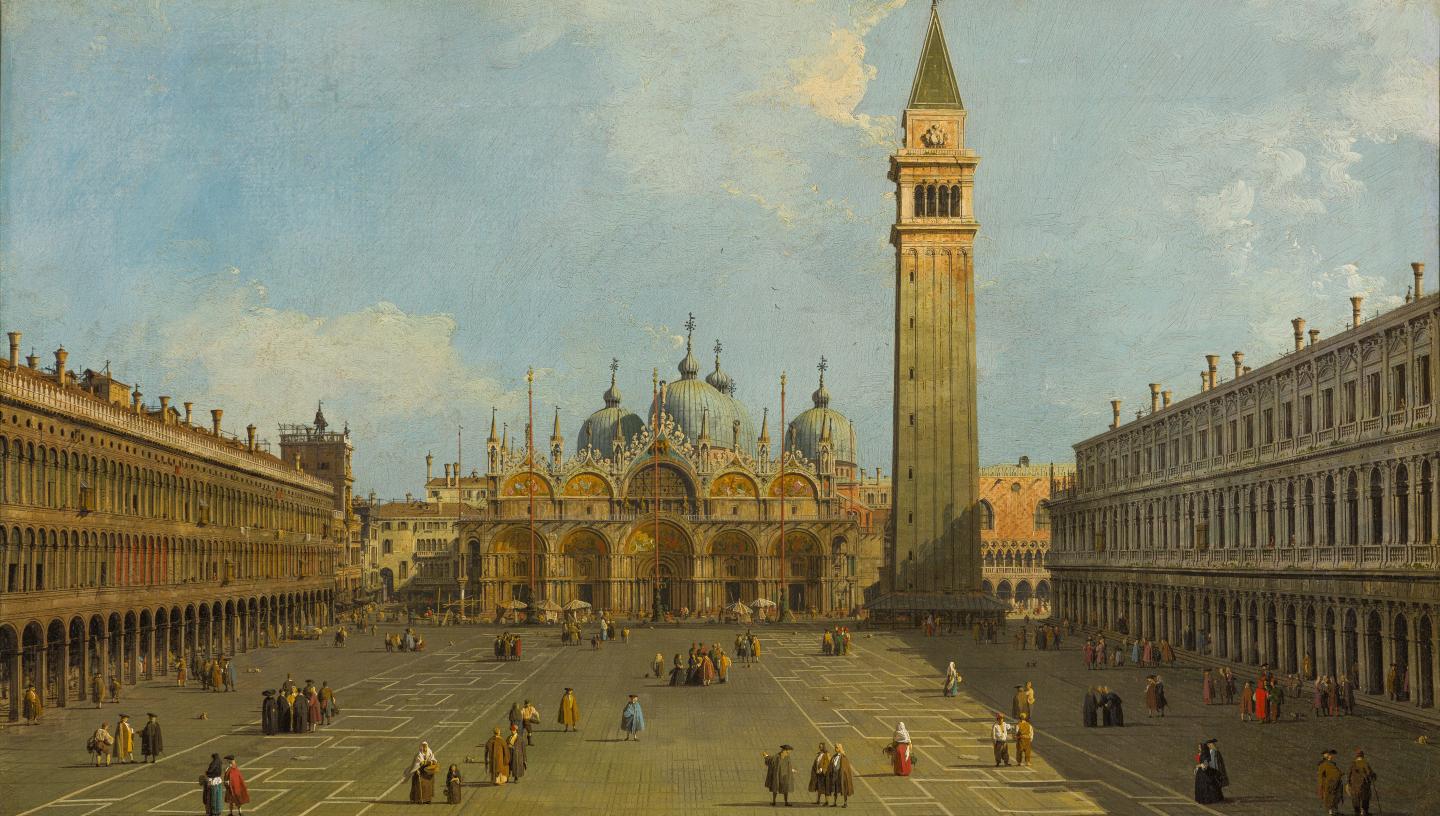

What was the Grand Tour?
Find out about the travel phenomenon that became popular amongst the young nobility of England
Art, antiquity and architecture: the Grand Tour provided an opportunity to discover the cultural wonders of Europe and beyond.
Popular throughout the 18th century, this extended journey was seen as a rite of passage for mainly young, aristocratic English men.
As well as marvelling at artistic masterpieces, Grand Tourists brought back souvenirs to commemorate and display their journeys at home.
One exceptional example forms the subject of a new exhibition at the National Maritime Museum. Canaletto’s Venice Revisited brings together 24 of Canaletto’s Venetian views, commissioned in 1731 by Lord John Russell following his visit to Venice.
Find out more about this travel phenomenon – and uncover its rich cultural legacy.
Canaletto's Venice Revisited
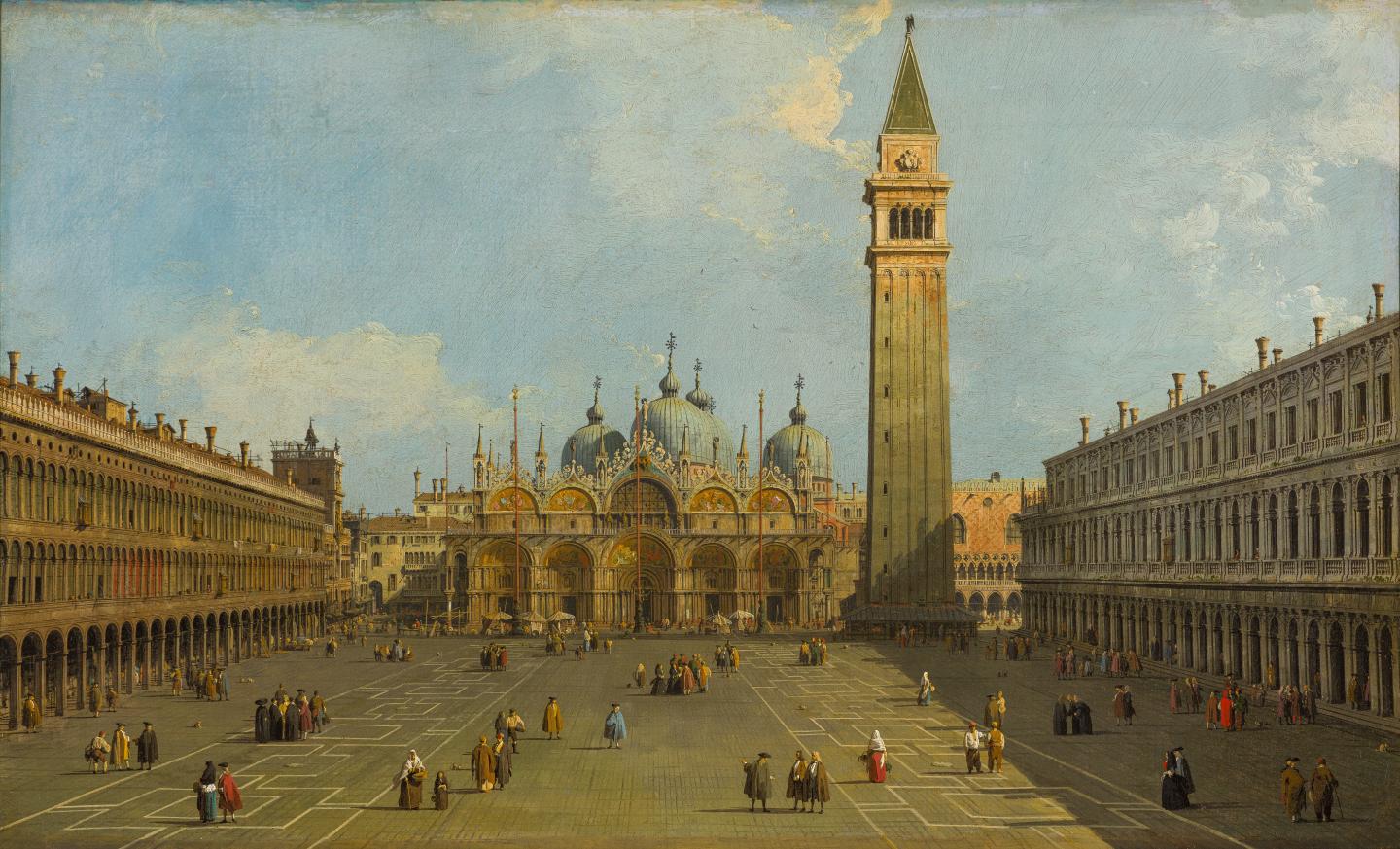
The origins of the Grand Tour
The development of the Grand Tour dates back to the 16th century.
One of the earliest Grand Tourists was the architect Inigo Jones , who embarked on a tour of Italy in 1613-14 with his patron Thomas Howard, 14th Earl of Arundel.
Jones visited cities such as Parma, Venice and Rome. However, it was Naples that proved the high point of his travels.
Jones was particularly fascinated by the San Paolo Maggiore, describing the church as “one of the best things that I have ever seen.”
Jones’s time in Italy shaped his architectural style. In 1616, Jones was commissioned to design the Queen’s House in Greenwich for Queen Anne of Denmark , the wife of King James I. Completed in around 1636, the house was the first classical building in England.
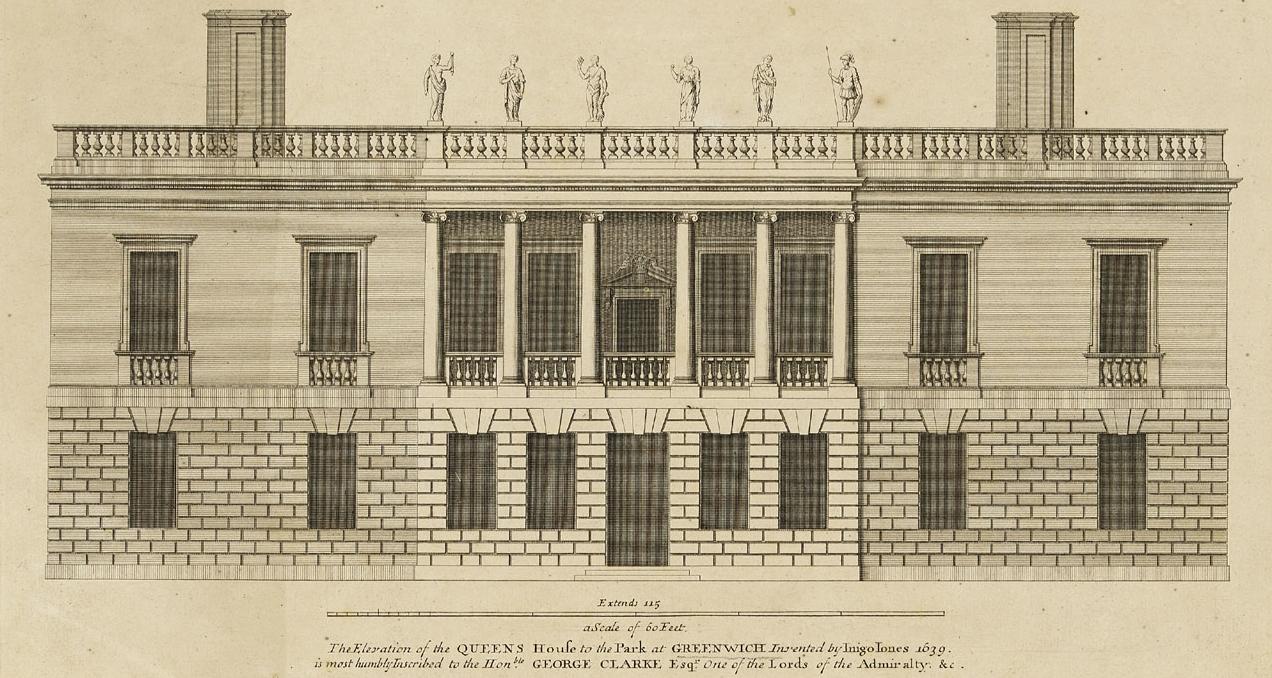
The expression ‘Grand Tour’ itself comes from 17th century travel writer and Roman Catholic priest Richard Lassels, who used it in his guidebook The Voyage of Italy, published in 1670.
By the 18th century, the Grand Tour had reached its zenith. Despite Anglo-French wars in 1689-97 and 1702-13, this was a time of relative stability in Europe, which made travelling across the continent easier.
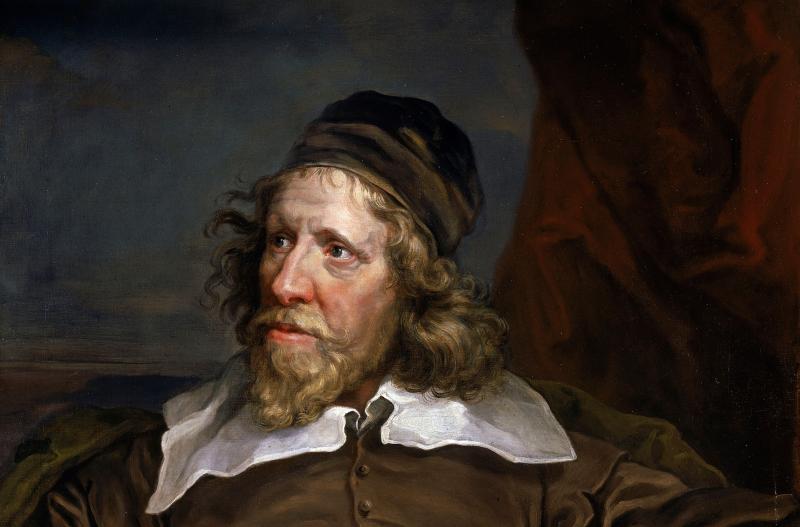
The Grand Tour route
For young English aristocrats, embarking on the Grand Tour was seen as an important rite of passage.
Accompanied by a tutor, a Grand Tourist’s route typically involved taking a ship across the English Channel before travelling in a carriage through France, stopping at Paris and other major cities.
Italy was also a popular destination thanks to the art and architecture of places such as Venice, Florence, Rome, Milan and Naples. More adventurous travellers ventured to Sicily or even sailed across to Greece. The average Grand Tour lasted for at least a year.
As Katherine Gazzard, Curator of Art at Royal Museums Greenwich explains, this extended journey marked the culmination of a Grand Tourist’s education.
“The Grand Tourists would have received an education that was grounded in the Classics,” she says. “During their travels to the continent, they would have seen classical ruins and read Latin and Greek texts. The Grand Tour was also an opportunity to take in more recent culture, such as Renaissance paintings, and see contemporary artists at work.”
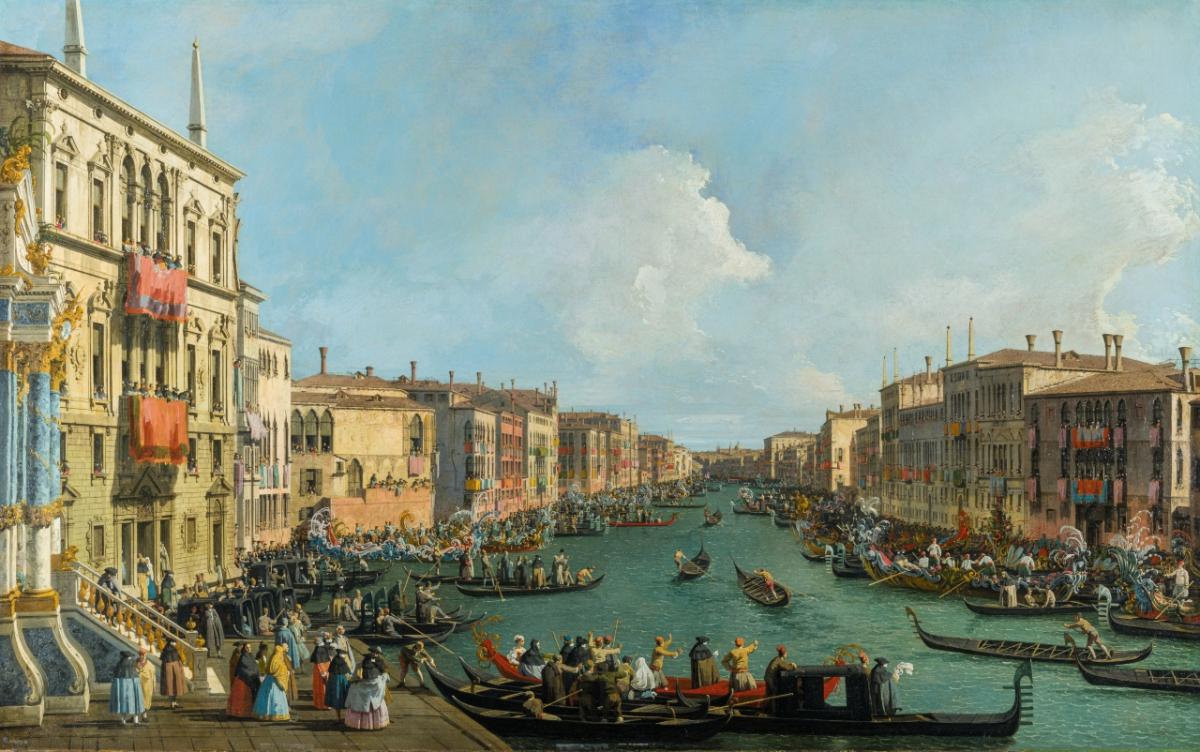
As well as educational opportunities, the Grand Tour was linked with independence. Places such as Venice were popular with pleasure seekers, boasting gambling houses and occasions for drinking and partying.
“On the Grand Tour, there’s a sense that travellers are gaining some of their independence and having a lesson in the ways of the world,” Gazzard explains. “For visitors to Venice, there were opportunities to behave beyond the social norms, with the masquerade and the carnival.”
Art and the Grand Tour
Bound up with the idea of independence was the need to collect souvenirs, which the Grand Tourists could display in their homes.
“The ownership of property was tied to status, so creating a material legacy was really important for the Grand Tourists in order to solidify their social standing amongst their peers,” says Gazzard. “They were looking to spend money and buy mementos to prove they went on the trip.”
The works of artists such as those of the 18th century view painter Giovanni Antonio Canal (known as Canaletto ) were especially popular with Grand Tourists. Prized for their detail, Canaletto’s artworks captured the landmarks and scenes of everyday Venetian life, from festive scenes to bustling traffic on the Grand Canal .
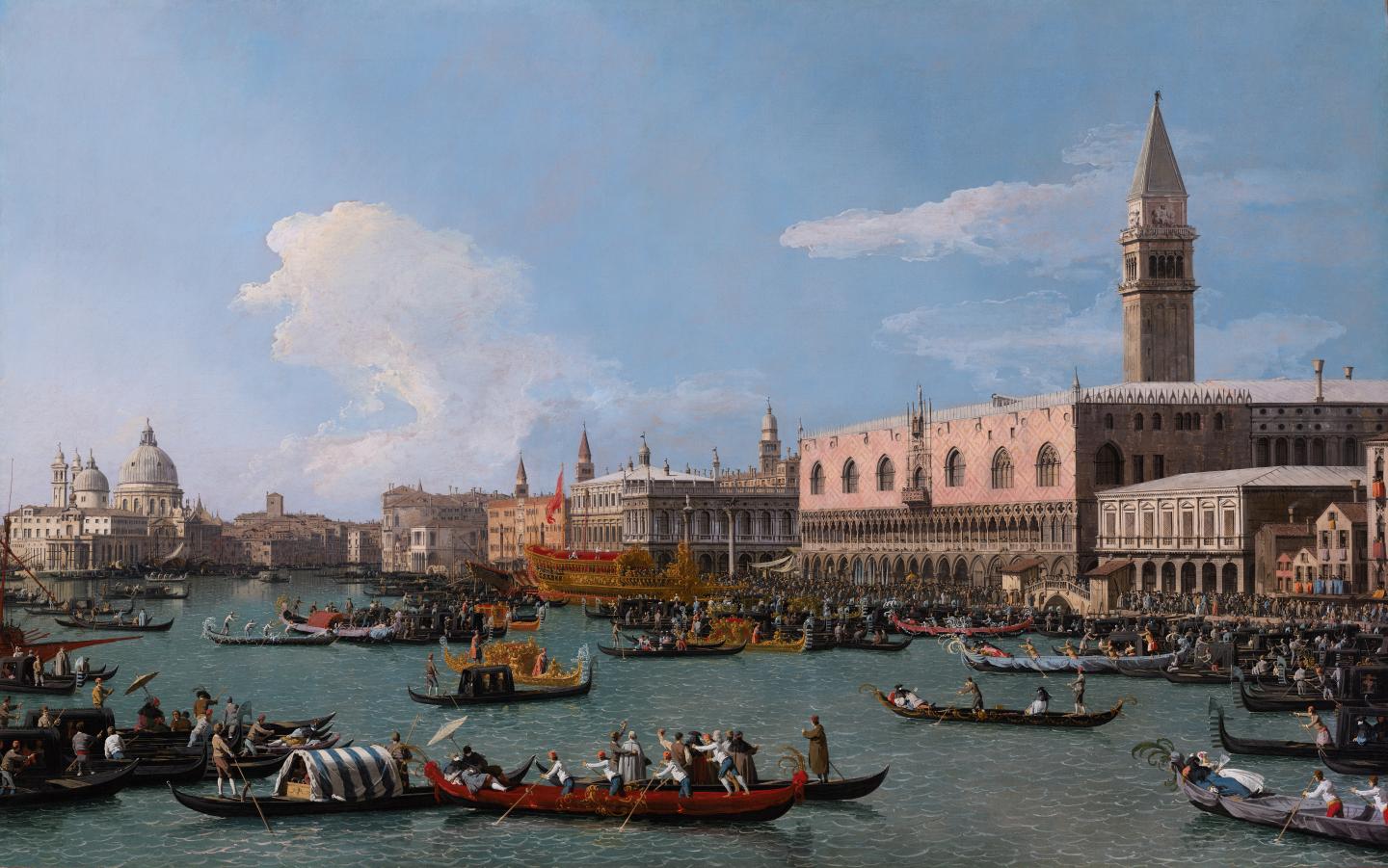
In 1731, Lord John Russell, the future 4th Duke of Bedford, commissioned Canaletto to create 24 Venetian views following his visit to the city.
Lord John Russell is known to have paid at least £188 for the set – over five times the annual earnings of a skilled tradesperson at the time.
“Canaletto’s work was portable and collectible,” says Gazzard. “He adopted a smaller size for his canvases so they could be rolled up and shipped easily.”
These detailed works, now part of the world famous collection at Woburn Abbey, form the centrepiece of Canaletto’s Venice Revisited at the National Maritime Museum .
Who was Canaletto?
The legacy of the Grand Tour
The start of the French Revolution in 1789 marked the end of the Grand Tour. However, its legacy is still keenly felt.
The desire to explore and learn about different places and cultures through travel continues to endure. The legacy of the Grand Tour can also be seen in the artworks and objects that adorn the walls of stately homes and museums, and the many cultural influences that travellers brought back to Britain.
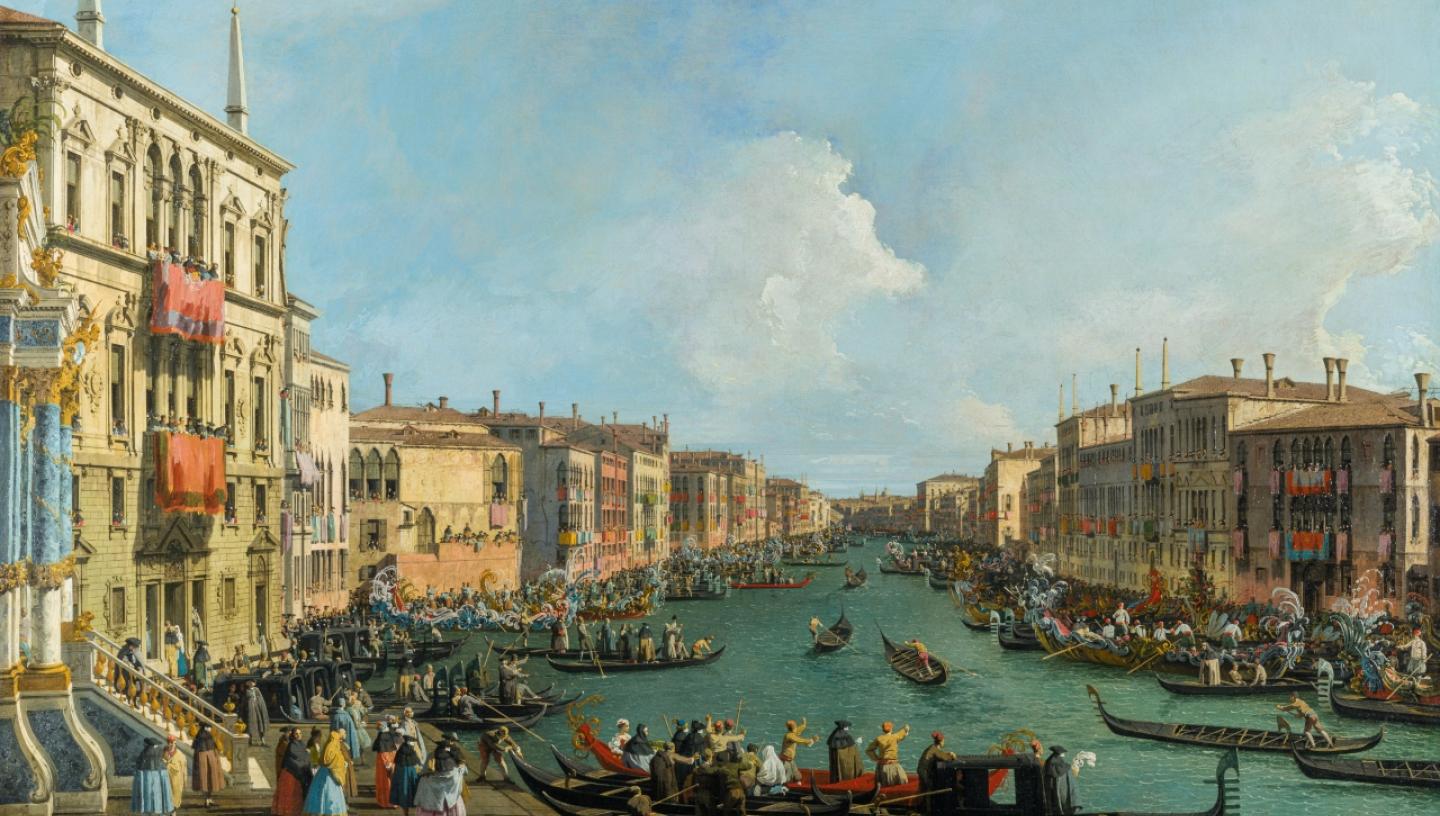
Canaletto's Venice Revisited

Main image: The Piazza San Marco looking towards the Basilica San Marco and the Campanile by Canaletto . From the Woburn Abbey Collection . Canaletto painting in body copy: Regatta on Grand Canal by Canaletto From the Woburn Abbey Collection
The Grand Tour: Everything You Need to Know
Gokce Dyson 28 November 2022 min Read
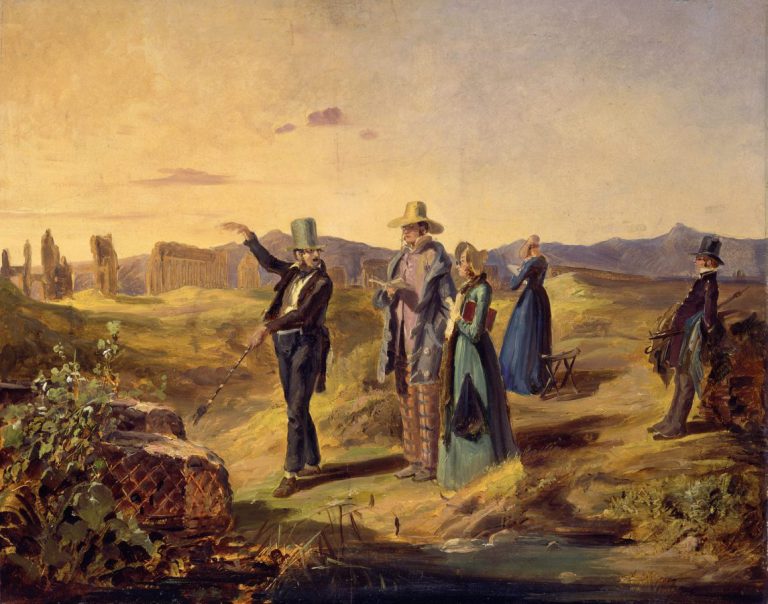
Carl Spitzweg, Englishmen in Campania , ca. 1835, Alte Nationalgalerie, Berlin, Germany.
Recommended
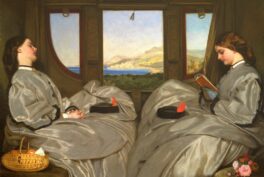
Art Travels
On the Road: Best Traveling Paintings
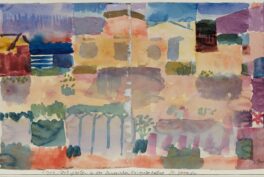
Artists’ Beloved Travel Destinations as Seen Through Their Art
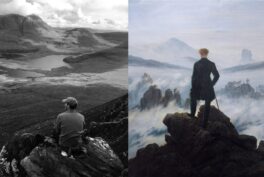
How to Do a 21st-Century Grand Tour According to Mr. Bacchus
Nowadays, it is very common to take a gap year before or after university studies to travel and expand your horizons. Dedicating a year or two before committing to a full-time job means you can experience different cultures, learn languages, and enjoy having a bit of fun before settling down. Back in the day, with similar objectives, many noblemen embarked on a journey across Europe before entering adulthood. It was called the Grand Tour.
The Grand Tour evolved between the 17th and 18th centuries as a custom of a traditional trip. The purpose of the Grand Tour was to provide male members of upper-class families with a formative experience. The term was first used by the Catholic priest and travel writer Richard Lassels in his guidebook The Voyage of Italy . The book came out in 1670 and described young lords traveling to Italy to see art, architecture, and antiquity. Lassels completed the Grand Tour five times during his lifetime.
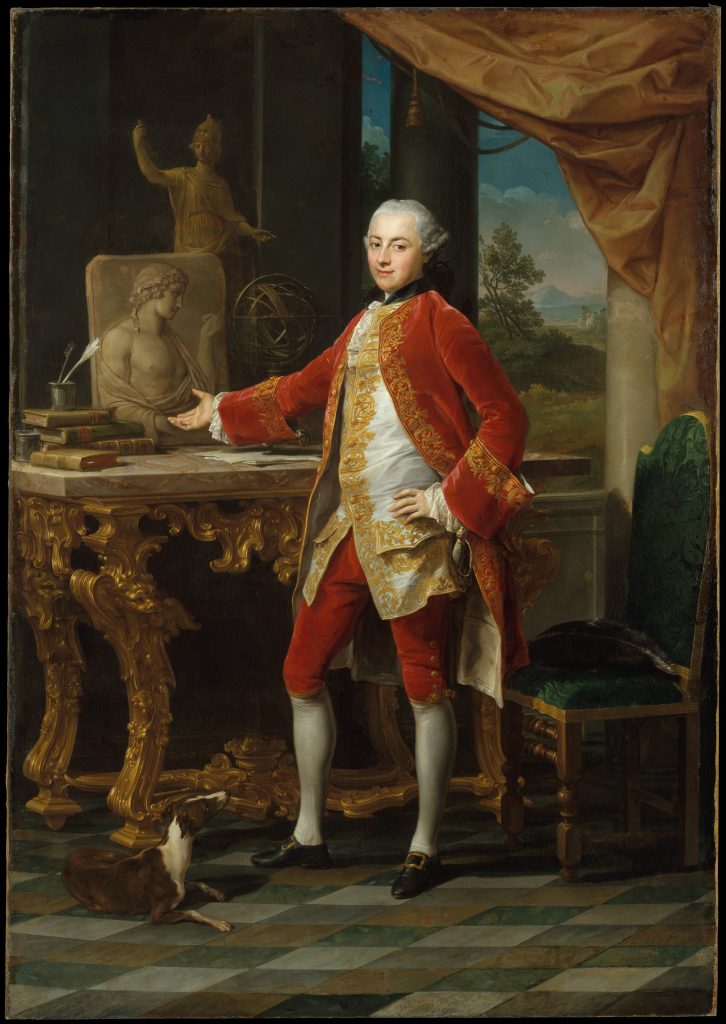
In England, for example, the general view held by the aristocrats was that foreign travel completed the education of an English gentleman. However, some people were also quite skeptical about the tour. They feared the amount of money spent to make the Grand Tour possible could ruin the young nobility.
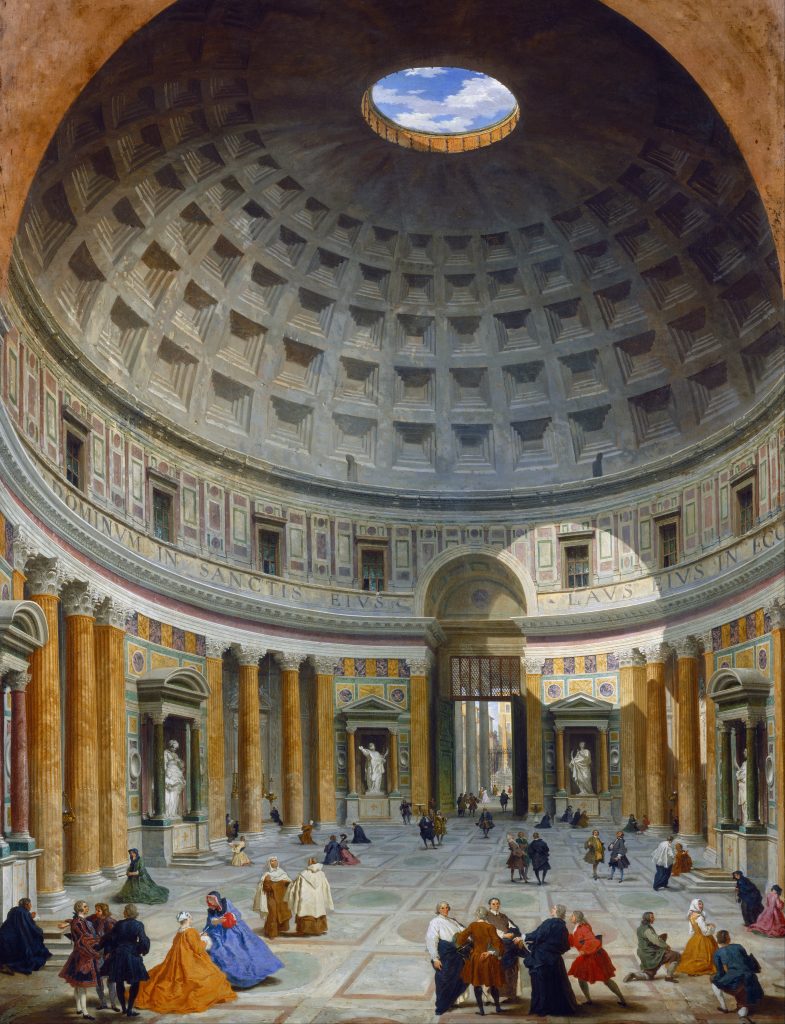
Although the Grand Tour was largely associated with English travelers, they were far from being the only ones on the road. On the contrary, wealthy families in France, Germany, Netherlands, Sweden, and Denmark also saw traveling as an ideal way to finish the education of their societies’ future leaders.
Itinerary of the Grand Tour
The traditional route of the Grand Tour usually began in Dover, England. Grand tourists would cross the English Channel to Le Havre in France. Upon arrival in Paris , the young men tended to hire a French-speaking guide as French was the dominant language of the elite during the 17th and 18th centuries. In Paris, they spent some time taking lessons in fencing, riding, and perhaps dancing. There, they became accustomed to the sophisticated manners of French society in courtly behavior and fashion. Paris was a crucial step in preparing for their positions to be fulfilled in government or diplomacy waiting back in England.

From there, tourists would buy transport, and if they were prosperous enough, they would hire a tutor to accompany them. The travelers would then get back on the road and cross the Alps, carried in a chair at Mont Cenis before moving on to Turin.
Italy was exceedingly the most traveled country on the Grand Tour. A Grand tourist’s list of must-see cities in Italy included Florence , Venice , and Naples . And then, there was Rome . Each Italian city offered immense importance in experiencing art and architecture, and Rome had it all.
Touring Italy
Once arriving in Italy, noblemen traveled to Florence followed by Venice, Rome, and Naples. Florence was popular for its Renaissance art, magnificent country villas, and beautiful gardens. Young aristocrats were able to gain entry to private collections where they could observe the legacy of the Medici family. Venice , on the other hand, was the party city. There was, however, a second reason to visit Venice. During their travels, grand tourists often commissioned art to take back home with them. Wealthy ones brought sketch artists along with them. Others purchased ready-made artworks instead. Giovanni Battista Piranesi created numerous prints and sketches depicting the ancient ruins in Rome. The works of the Venetian artist were popular among noblemen.
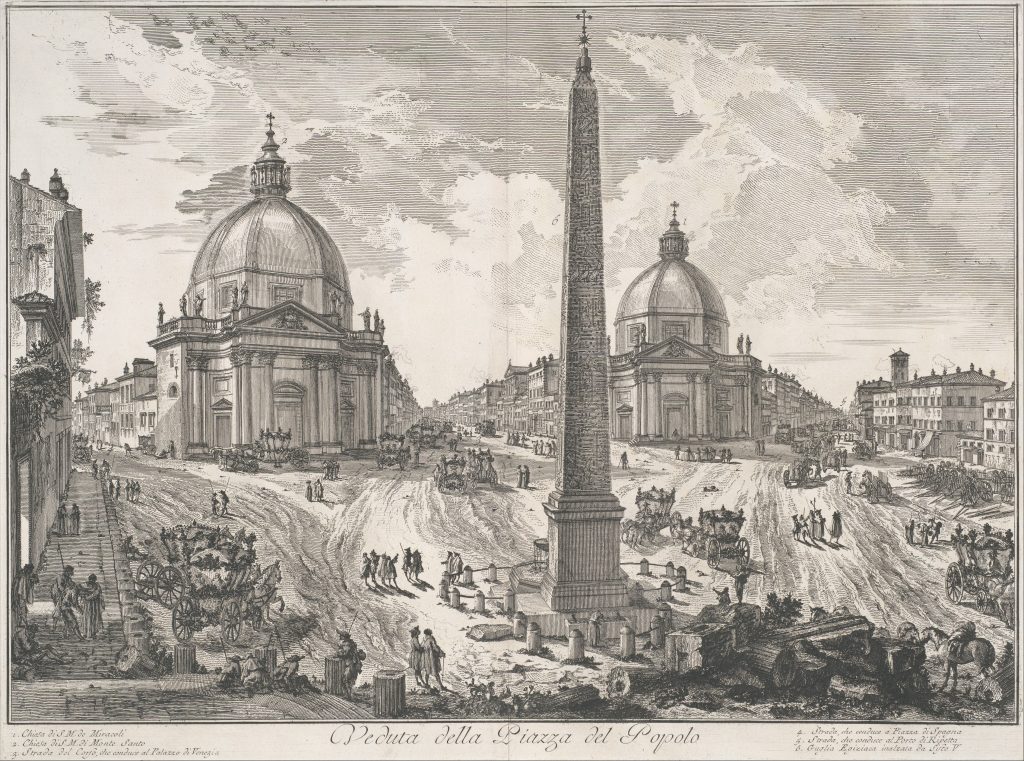
Rome was considered the ultimate stop during the Grand Tour. The city had a harmonious mixture of past and present. One could experience modern-day Baroque art and architecture and ancient ruins , dating back thousands of years at the same time. It was lauded as home to Michelangelo’s and Bernini’s most prized works. Gentlemen visited spots like the Pantheon, the Colosseum, and Porta del Popolo. William Beckford described his feelings in a letter when he was on his Grand Tour:
Shall I ever forget the sensations I experienced upon slowly descending the hills, and crossing the bridge over the Tiber; when I entered an avenue between terraces and ornamented gates of villas, which leads to the Porto del Popolo… William Beckford, letter from the Grand Tour, 1780.
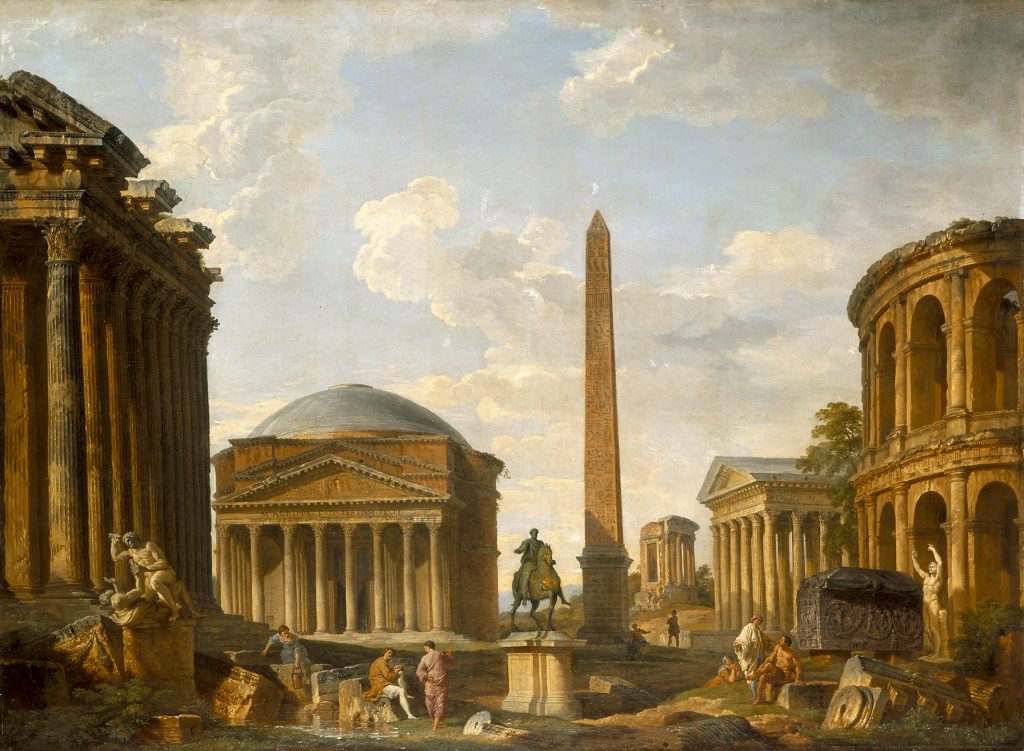
The next stop on the route was Naples. When Italian authorities began excavations in Herculaneum and Pompeii in the 1730s, grand tourists flocked there to delve into the mysteries of the ancient past. Naples became a popular retreat for the British who wanted to enjoy the coastal sun. Travelers such as J. W. Goethe praised the city’s glories:
Naples is a Paradise: everyone lives in a state of intoxicated self-forgetfulness, myself included. I seem to be a completely different person whom I hardly recognize. Yesterday I thought to myself: Either you were mad before, or you are mad now. J. W. Goethe, Google Arts& Culture .
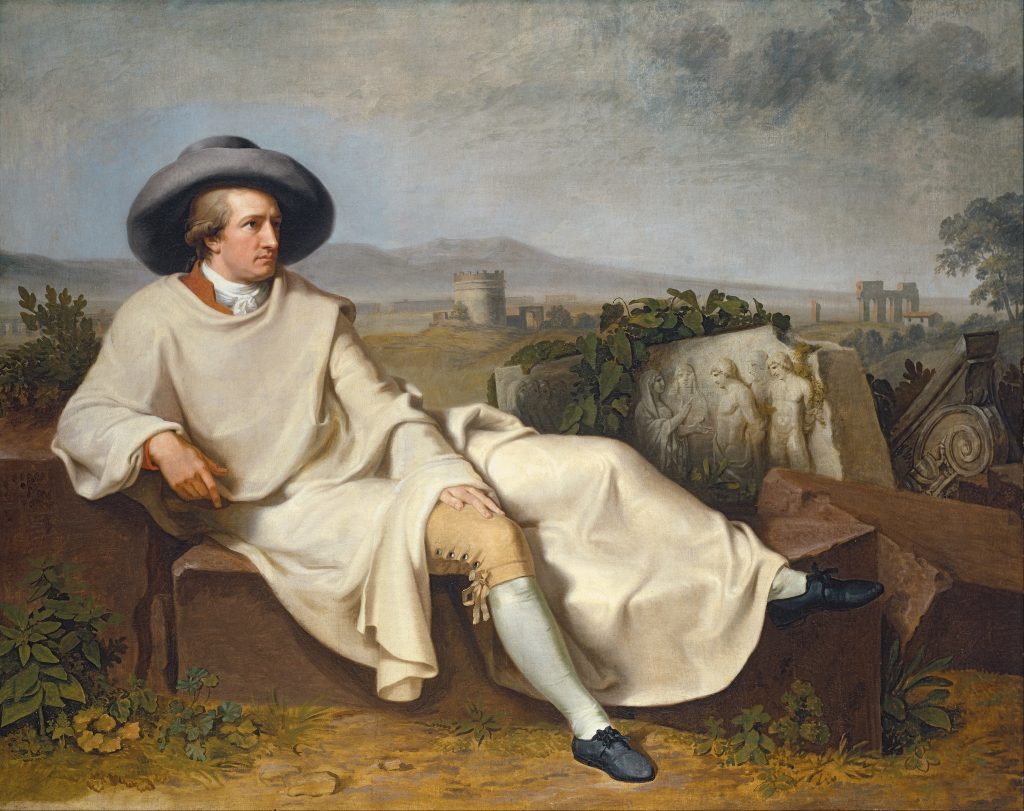
Returning home, young gentlemen crossed the Alps to the German-speaking parts of Europe and visited Innsbruck, Vienna , Dresden, and Berlin . From there, they stopped in Holland and Flanders before returning to England.
With the introduction of steam railways in Europe around 1825, travel became safer, cheaper, and easier to undertake. The Grand Tour custom continued; however, it was not limited to the members of wealthy families. During the 19th century, many educated men had undertaken the Grand Tour. It also became more popular for women to travel across Europe with chaperones. A Room with A View, written by English novelist E. M. Forster, tells the story of a young woman who embarks on a journey to Italy in the 1900s.
Legacy of the Grand Tour
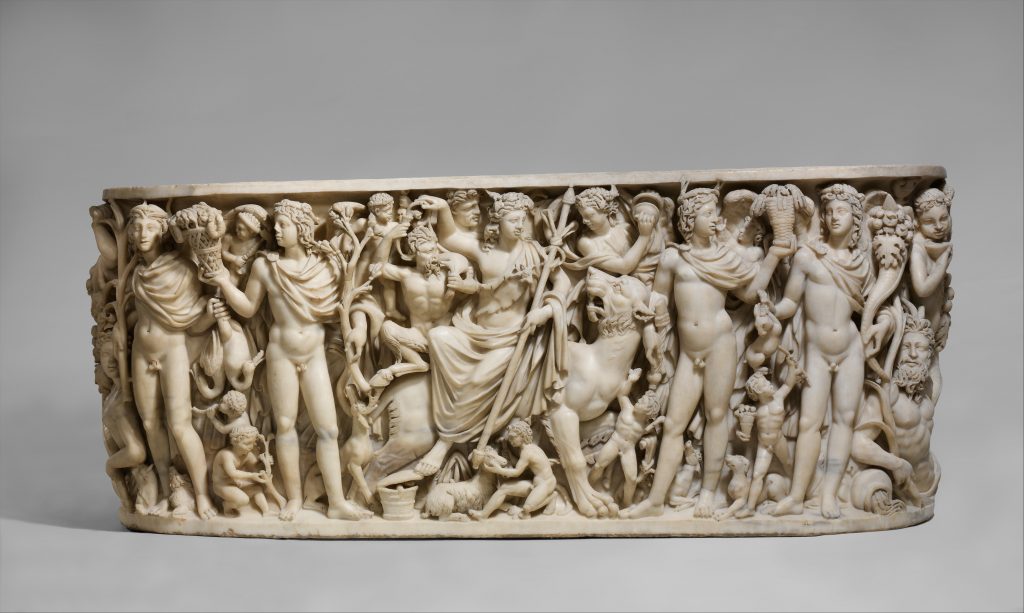
Grand tourists would return with crates full of books, oil paintings, medals, coins, and antique artifacts to be displayed in libraries, cabinets, drawing rooms, and galleries built for that purpose. The marble sarcophagus shown above was brought back from Italy to England by the third duke of Beaufort who found this item during his Grand Tour stop in Pompeii. Impressed by the European art academies on his Grand Tour, Joshua Reynolds founded the Royal Academy of Arts in London upon his return in 1768. The Grand Tour inspired many travelers to take a greater interest in ancient art. The British School in Rome was established to learn more about the Roman ruins and it still exists today.
Get your daily dose of art
Click and follow us on Google News to stay updated all the time
We love art history and writing about it. Your support helps us to sustain DailyArt Magazine and keep it running.
DailyArt Magazine needs your support. Every contribution, however big or small, is very valuable for our future. Thanks to it, we will be able to sustain and grow the Magazine. Thank you for your help!
Gokce Dyson
Based in Canterbury, Gokce holds a bachelor's degree in History and Archaeological Studies and a master's degree in Museum and Gallery Studies. She firmly believes that art enables us to find ourselves and lose ourselves at the same time. If Gokce is not tucked into a cosy corner with a medieval history book, she can be found spending her evenings doing jigsaw puzzles.
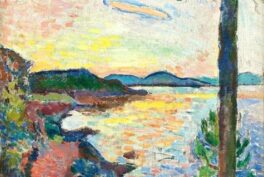
Top 5 Artsy Travel Destinations in 2024 Through Paintings
We suggest you a selection of the best tourist destinations and festivals by the hand of great artists!
Andra Patricia Ritisan 11 March 2024
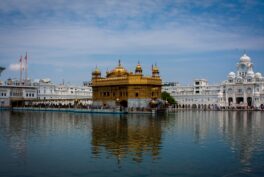
Art Travels: Golden Temple of Amritsar
Nestled in the city of Amritsar in Northwestern India is the iconic Harmandir Sahib or Darbar Sahib, better known as the Golden Temple. This sublime...
Maya M. Tola 8 January 2024
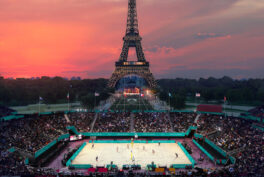
Art and Sports: En Route to the Paris 2024 Olympics
The forthcoming Paris 2024 Summer Olympics will bridge the worlds of art and sport, with equestrian competitions at the Palace of Versailles, fencing...
Ledys Chemin 9 April 2024
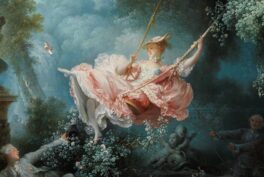
10 Masterpieces You Need To See in London
London is a city full of masterpieces. It is not only one of the biggest art hubs but also one of the most multicultural places in the entire world.
Sandra Juszczyk 23 February 2024
Never miss DailyArt Magazine's stories. Sign up and get your dose of art history delivered straight to your inbox!
- International edition
- Australia edition
- Europe edition
The National Gallery's Grand Tour is its best show ever
A private view: Caravaggio's Salome Receives the Head of John the Baptist displayed in Soho's Walkers Court (AKA Porno Passage). Photograph: David Levene
"Fabulous quality!" the man said to two blue suited colleagues, running an admiring finger tip down Seurat's Bathers at Asnieres .
I fear he meant the truly startling quality of the reproductions by Hewlett Packard, but he could have been talking about the whole project , 44 life size copies of masterpieces from the National Gallery, hung at head height, handsomely framed and wittily captioned, on carefully chosen walls all over Soho and Seven Dials. Look at a gallery of them here .
The three suits were scuttling clutching briefcases and portfolios through Kingly Street, an unlovely street in Soho which is effectively one long loading bay for Regent and Carnaby streets, when they were literally stopped in their tracks by art.
You could see the same effect all over the surrounding streets: on Glasshouse Street an elderly Chinese woman blessed herself as she passed Michaelangelo's wrenching Entombment of Christ .
Not all the paintings can hack it. The Fighting Temeraire has sunk, somehow fatally holed by a long dull building on Golden Square - unlike Titian's Bacchus and Ariadne in St Anne's Court, where the narrow alley forces you into an almost uncomfortably close embrace with all that naked flesh.
Most work astoundingly well. The most composed woman in the National Gallery, little Christina of Denmark by Holbein, so deceptively demure in her plain dark gown, so beautiful without so much as a tendril of hair showing under dark cap, the sexy little smile that convinced Henry VIII she'd make an excellent successor to Jane Seymour and the broad clever forehead that led her to turn him down flat, stills the chatter and clatter of Broadwick Street. Even if they kept going, people slowed and smiled at her.
Around the corner Rubens' Samson , sprawled fatally drunk on sex across Delilah's lap, has to compete with a bit of concrete brutalism, and a huge pop art sculpture of a giant electrical plug and socket on the same wall in Ganton Street - and slays them: a postman stopped, stared, and searched through his uniform pockets for his mobile to snap them.
The captions are sharp, informative and unpatronising: one of the sexiest paintings in the entire collection, Botticelli's ravishing Venus and Mars , the goddess still cool as a cucumber, Mars sunk in sleep, his mouth just ajar suggesting that he's probably snoring, hung between Sweaty Betty and a nail bar in Kingly Court, is described as "jam packed with sexual innuendo".
Every caption reminds the viewer that there are many more not just cheap but free thrills jam packed into the National Gallery. People who already visit our great museums tend to assume everyone knows they're free, but that is not true: only last week I spoke to a woman who said wistfully she'd not been in the British Museum since a school visit as a child, and she supposed it's terribly dear now.
A few paintings in streets with less passing traffic - like the appalling encounters with death which flank the end of pretty Meard Street, mortality seeping from Van Gogh's cypruses into his golden wheat field on one side, opposite Joseph Wright of Derby's savage scene of the weeping children forced for their own good to watch the bird's despairing flutters in the bell jar from which the last gasp of air is being sucked - were alone.
But most had at least one person poring over every detail, and many had clumps of people blocking the pavement talking about art, as startling a sight as I've ever seen in London.
Yesterday I managed 21 paintings in just over two hours including two coffee breaks, just under half the total: I never managed to find the Le Nain which should be somewhere around the Shakespeare pub on Carnaby Street, but I'm determined to go back to see how Bronzino's outrageous Venus and Cupid is getting on in Greek Street.
I never once managed to get through on the special phone line (0844 800 4172) listed by each picture, so I have no idea what the gallery's expert opinions might be. But my opinion - in answer to the young man who almost fell off his bicycle when he met The Ambassadors in Berwick Street, blurting out "what the fuck is that?" - is it's the best National Gallery exhibition I've ever seen.
- Art and design
- Art & design blog
Comments (…)
Most viewed.

- News & Events
- Articles & Essays
- Market News
- Market Calendar
- Rankings & Reviews
- Art Galleries
- Periods & Styles
- Art Masterpieces
- Art Museums
The National Gallery and HP unveil the Grand Tour today
- 17 May 2006 17 May 2021
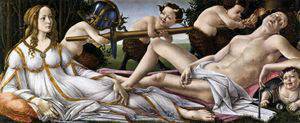
Sandro Botticelli’s “Venus and Mars” is one of the masterpieces to hit London’s streets
The National Gallery and HP unveil the Grand Tour today For twelve weeks, the streets of London are being turned into a Gallery – as around 30 full size recreations of National Gallery paintings are hung on the walls, in the most unexpected and unusual of places]]>
Source: The National Gallery of London For twelve weeks, the streets of London are being turned into a Gallery – as around 30 full size recreations of National Gallery paintings are hung on the walls, in the most unexpected and unusual of places.
Masterpieces from Caravaggio to Constable will be vying for position among the bustling streets from Soho to Seven Dials. Celebrating the richness, diversity and stories of the National Gallery’s permanent collection, the Grand Tour aims to encourage people to make the short journey to visit the genuine works, and many more, for free.
The Grand Tour has been made possible as a result of the collaboration between the National Gallery and HP – the concept was devised and has been implemented by award-winning brand and design consultancy, The Partners.
Through innovative and creative imaging and printing, HP has reproduced the paintings so they exactly mirror the format of the originals. Steve Gill, Vice President and managing director, HP UK & Ireland said, “This is a really exciting initiative for HP to be involved in and has provided us with an opportunity to demonstrate some of our leading edge technology. Our imaging, printing capabilities and portfolio has enabled us to support the National Gallery with this Grand Tour concept, by producing high quality reproductions of these wonderful masterpieces.”
Each picture will be in a replica frame, and have an information plaque next to it – just as it has in the real Gallery. The plaques will also include a phone number, which people can call to access a specially recorded audio guide to that particular painting, and its artist.
A map of the entire Grand Tour (including a selection of ‘mini-tours’) along with further information about the paintings, the story of how the project came about, audio downloads and a picture gallery are all available on a specially created website – thegrandtour.org.uk
National Gallery Director Charles Saumarez Smith said, “I am very delighted that the National Gallery’s long-standing association with Hewlett-Packard is continuing with a characteristically imaginative effort to bring art into the local community and to encourage new audiences to be aware of the great works of art to be seen in London.”
The origins of the Grand Tour date back to the 17th Century, when the wealthy upper classes undertook a journey of cultural enlightenment across Europe, in a life-changing trip that could last for months or even years.
Now – thanks to the National Gallery and HP – we’re seeing the idea of the Grand Tour turned on its head. Rather than the public seeking out its art – art is seeking out its public, interrupting their everyday lives and reminding them of the treasures just around the corner.
Follow us on:
Privacy Overview

Turner on Tour
Prized turner paintings come back to britain for the first time in a century.
Issued July 2022
3 November 2022 – 19 February 2023 Room 46 Admission free
Two ground-breaking pictures by Joseph Mallord William Turner (1775–1851) will return to the UK for the first time in over 100 years, as part of a new National Gallery focus exhibition.
Generously lent for the first time by The Frick Collection in New York, the two oil paintings, will be on display at the Gallery in the Turner on Tour exhibition this winter (3 November 2022 – 19 February 2023).
'Harbour of Dieppe: Changement de Domicile' and 'Cologne, the Arrival of a Packet-Boat: Evening', painted in the mid-1820s, have not been seen in the UK since 1911. They were exhibited in New York in 1914 at the Knoedler Gallery, and subsequently acquired the same year by the American industrialist Henry Clay Frick. They have remained in the United States ever since.
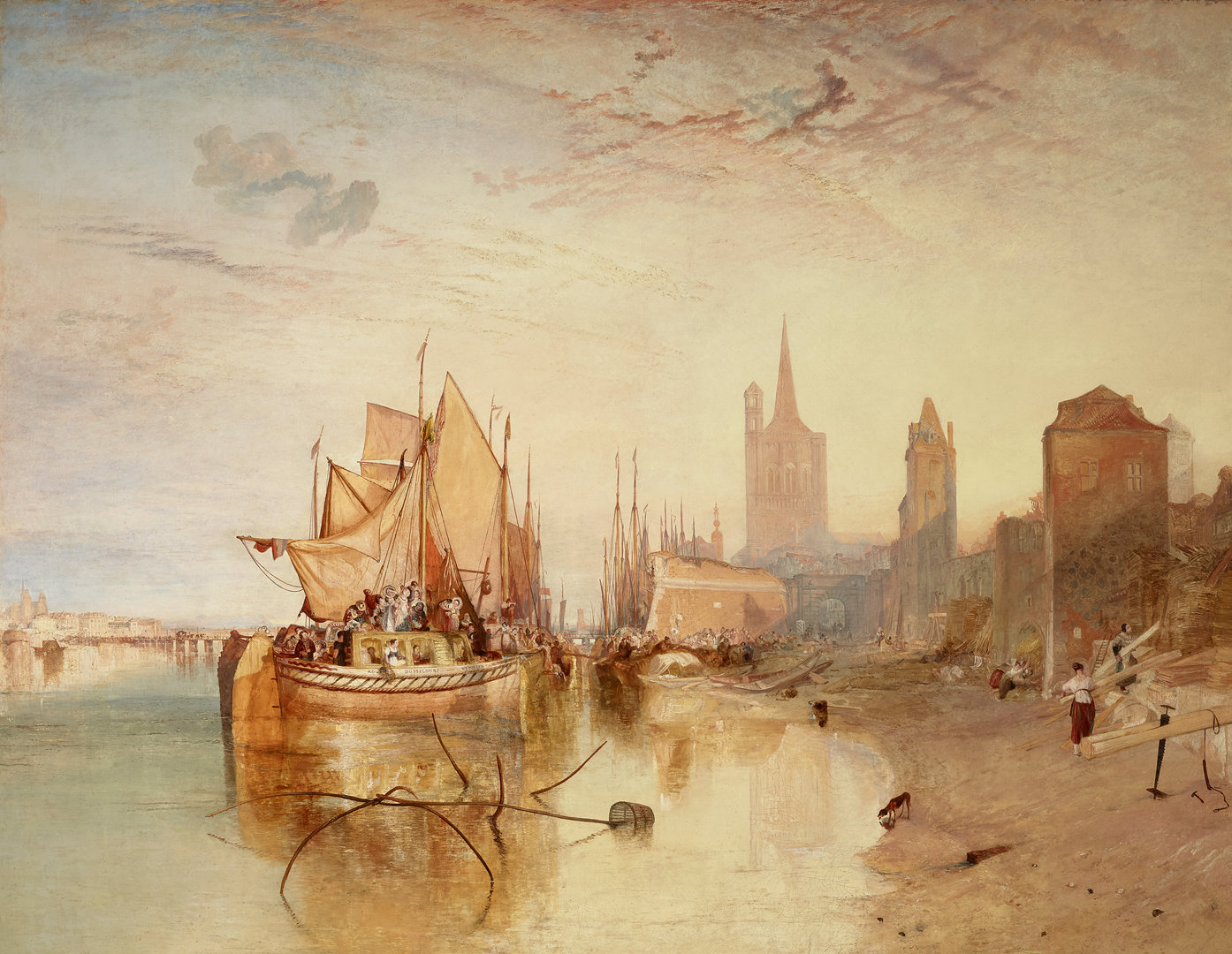
'Dieppe' and 'Cologne' exemplify Turner’s life-long fascination with the subject of ports and harbours – past and present – as dynamic, transitional places. Exhibited at the Royal Academy in 1825 and 1826 respectively, they represent in powerfully visual terms, the outcomes of Turner’s regular sketching tours within Europe that were central to his fame as an artist-traveller, as well as his radical approach to colour, light and brushwork.
Turner visited the French fishing port of Dieppe, in Normandy, twice in the early 1820s before painting 'Harbour of Dieppe: Changement de Domicile' in his London studio.
Set in the afternoon, the work draws from sketches made on site, as well as from memory and imagination. In this Romantic view, signs of modernisation, such as the steamboats then in use, are excluded. Turner focuses on the vibrant energy of the town filled with glowing sunlight and hundreds of figures engaged in lively activities. He captured the details of local dress, studied the ships and their rigging up close and made detailed renderings of the town’s architecture. The French subtitles Turner assigned the painting – ‘Changement de Domicile’ ( change of home address ) – may refer to the couple to the right, who appear to be loading or unloading objects from boats.
Turner elevates his genre scene through the monumental scale of the canvas and the compositional format borrowed from the grand seaports of Claude (1604/5?–1682) . Here, as in Claude’s paintings, a central depiction of the sun reflected on water draws the eye back in space, while two arms of the town, with its buildings and boats, reach around it. The diminishing scale of the sails creates the illusion of depth. Another Claudian device is the use of light to create aerial perspective, whereby the haze created by sunlight makes the objects in the distance lose their focus and local colour and merge with a pale bluish grey sky.
Turner’s fascination with light during this period was inspired by a visit to Italy he made in 1819. Turner’s contemporaries noted this tendency to idealise the Italian countryside as some sort of pastoral idyll in contrast to the more industrialised landscape of the north. Journalists of the time deplored his pervasive use of yellow and criticised him for transposing a Mediterranean light and its golden tones onto a Northern European setting.
Turner exhibited this painting at the Royal Academy in 1825, but completed it and subsequently dated it 1826, the year when its companion piece Cologne: The Arrival of a Packet Boat: Evening , set at dusk, was shown at the Royal Academy.
A former Roman colony and a free, imperial city during the Holy Roman Empire, Cologne had long been a major commercial, educational, and religious centre. Situated on the banks of the Rhine, Cologne was still largely medieval in appearance when Turner visited. Only a small section of the city is visible in his painting: the tower and spire of the church of Groß St. Martin piercing the evening sky, with defensive towers, walls, and the customs house leading up to it. The labouring women in peasant dress and the abandoned fishing contraption contribute to a sense of time standing still. The ferry boat carrying female tourists to shore is about to disturb the peace of the scene.
These paintings were made at a time when Turner was experimenting with the representation of light and they offer a fascinating glimpse into his technique as well as the everyday life of major European ports of distinctly different regions.
In many ways, the story these paintings tell is less about a place, than it is about Turner’s increasing fascination with the dramatic effects of sunlight which becomes a significantly more important motif in Turner’s later works.
Whether or not his last words were indeed, as legend has it, ‘The sun is God,’ these words and by extension these paintings seem to sum up Turner’s artistic quest.
Turner on Tour is the third exhibition in Room 46 this year after Gainsborough’s Blue Boy (25 January 2022 – 15 May 2022) and Picasso Ingres: Face to Face (3 June 2022 – 9 October 2022) featuring rarely loaned paintings from American institutions.
Christine Riding, Jacob Rothschild Head of the Curatorial Department, says: ‘I am absolutely delighted that these wonderful paintings by Turner, one of the best loved artists in Britain, are going to be returning to the UK for the first time in more than 100 years and will be seen in Trafalgar Square, where they are sure to be hugely popular. The National Gallery was the home of the Turner Bequest so this is the perfect location for people to enjoy getting reacquainted with such masterpieces in person.’
National Gallery Director, Dr Gabriele Finaldi, says ‘ Turner’s glorious river and harbour scenes from the Frick Collection are, through a special set of circumstances, coming to London for an unprecedented showing at the National Gallery. I am enormously grateful to our friends at the Frick for sharing their masterpieces with us.’
The H J Hyams Exhibition Programme
Supported by The Capricorn Foundation
For more information, visit nationalgallery.org.uk
Twitter @nationalgallery
Facebook @thenationalgallery
Instagram #nationalgallery
YouTube The National Gallery
Notes to editors
Press view: tuesday 1st november 2022.
Joseph Mallord William Turner 'Harbour of Dieppe: Changement de Domicile' Exhibited 1825, but subsequently dated 1826 Oil on canvas 173.7cm x 225.4 cm The Frick Collection, New York © The Frick Collection, New York / photo Michael Bodycomb
Joseph Mallord William Turner 'Cologne, the Arrival of a Packet-Boat: Evening' 1826 Oil on canvas 168.6 x 224.2 cm The Frick Collection, New York © The Frick Collection, New York / photo Michael Bodycomb
Publication
Title: 'Turner on Tour' Authors: Christine Riding With contributions by Thomas Ardill and Aimee Ng 64 pages, c. 43 illustrations tbc, 270 x 230 mm, portrait Paperback with flaps: £14.95, special Gallery price: £12.95 Published by National Gallery Global, London Distributed by Yale University Press
About Joseph Mallord William Turner (1775–1851)
Joseph Mallord William Turner, 19th-century Britain’s greatest land- and seascape artist, is perhaps the best-loved English Romantic artist. He became known as 'the painter of light', because of his increasing interest in brilliant colours as the main constituent in his landscapes and seascapes. His works include water colours, oils and engravings.
Turner was born in Maiden Lane, Covent Garden in London. The son of a London barber and wig maker, Turner entered the Royal Academy Schools in 1789 at the age of 14. As a youth, he travelled around England making drawings and watercolours of the countryside. He exhibited watercolours at the Royal Academy from 1790, and in 1796, Turner exhibited his first oil painting at the Royal Academy. In 1799, he was elected an associate member of the Royal Academy at the age of 24 - the youngest permitted age - and in 1802, he was elected a full member. That year, wartime borders with Europe temporarily opened, and he travelled abroad for the first time, visiting France and Switzerland. For the rest of his life, when it was possible, Turner travelled extensively around Europe, drawing in sketchbooks and producing paintings from them back in his studio in England.
His earliest works form part of the 18th-century topographical tradition. He was soon inspired by 17th-century Dutch artists such as Willem van der Velde, and by the Italianate landscapes of Claude and Richard Wilson.
He depicted ports throughout his career, both in monumental oil paintings and in watercolours. An insatiable traveller and an artist with a deep fascination with light, topography, and local traditions, as well as with classical antiquity, Turner brought an innovative approach to the depiction of both modern and ancient ports.
Turner became interested in contemporary technology, as can be seen from The Fighting Temeraire and Rain, Steam and Speed . At the time his free, expressive treatment of these subjects was criticised, but it is now widely appreciated. In his art, he recorded England’s landscape as it evolved over decades of intense industrialisation.
He was both widely acclaimed by his contemporaries and attacked by critics, especially for his late, more abstract and experimental works. He had acquired great wealth by the time of his death of cholera at the age of 76.
Turner bequeathed much of his work to the nation. The great majority of the paintings are now at Tate Britain.
Also on display at the National Gallery at the same time:
Winslow Homer: Force of Nature (10 September 2022 – 8 January 2023)
Lucian Freud: New Perspectives (1 October 2022 – 22 January 2023)
Publicity images can be obtained from https://press.nationalgallery.org.uk/
For more information and images
E-mail National Gallery Press Office at [email protected]
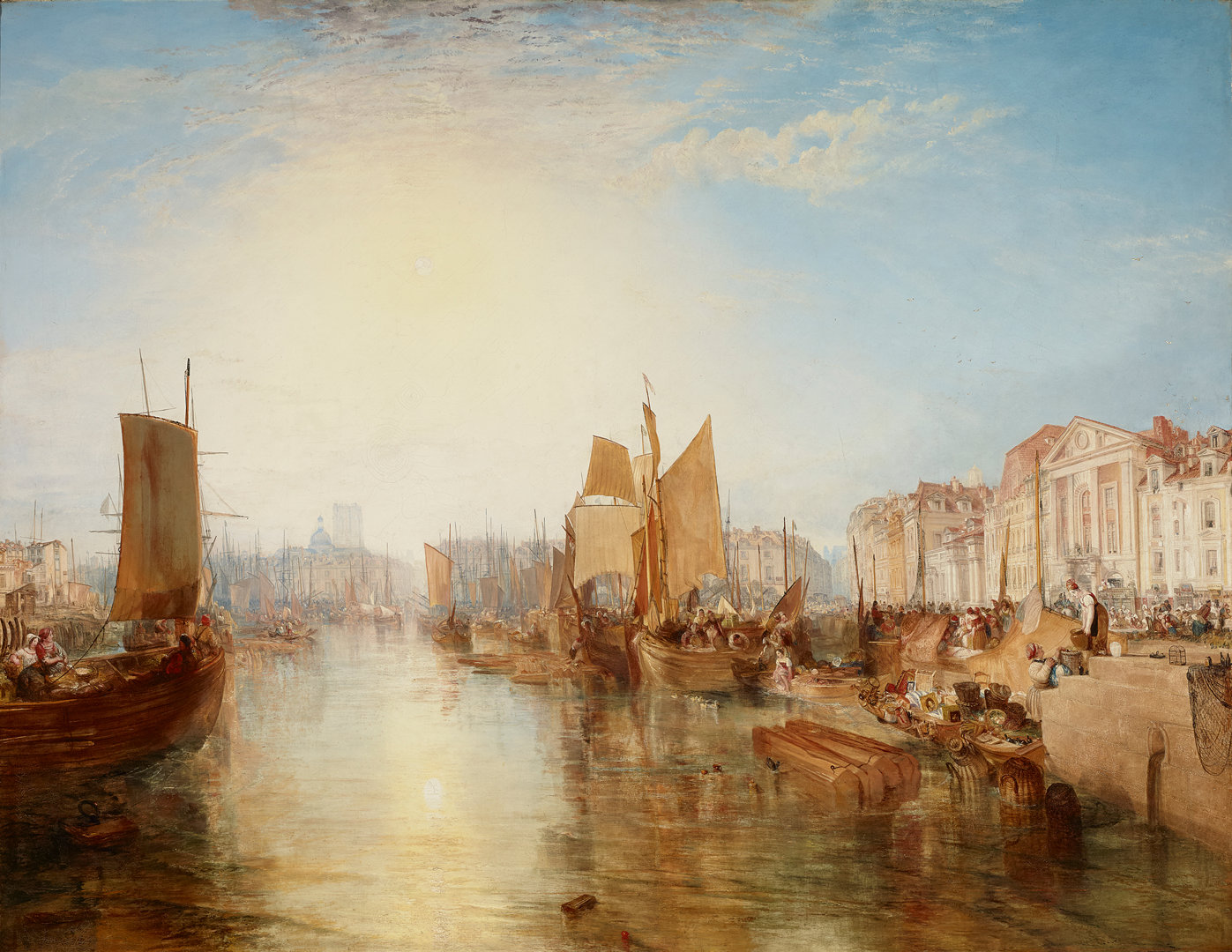
The Grand Tour: Venice
User-created.
This user gallery has been created by an independent third party and may not represent the views of the institutions whose collections include the featured works or of Google Arts & Culture.
by Mark Melchior

- Monumental Complex
- National Gallery
- Farnese Theatre
- Archaeological Museum
- Palatine Library
- The Bodoni Museum
- Exhibition spaces
- Organise your Visit
The Grand Tour
The Grand Tour was a journey of cultural initiation which young artists, aristocrats, collectors and statesmen in the XVIII and XIX centuries undertook in Italy in order to experience the survival of classical culture. To document this formative ritual, which quickly became a status symbol, souvenir images emerged in the ‘700 which were reproduced in series in order to prolong the mythical dimension of the places visited. It’s the case, for example, of the two pictures by the German artist Rosa da Tivoli , of the View with ruins by Francesco Maria Costa , or indeed by the French artist Hubert Robert . Both are inventories of architecture and sculpture, of statues and capitals which dominate a Roman landscape painted freely with light touches of colour.
During his travels in Italy, the Dutch painter Pieter Mulier, nicknamed il Tempesta (the storm), was given a particularly warm welcome by the last Farnese Dukes to the extent that he stayed in Parma for a number of months. In the pair of landscapes on display both of an arcadian taste, the artist organises the natural views with contrasting schemes: on one side a wide valley which opens under a cloudy sky with a backdrop of a ruined building and a tree; on the other a painting within a wood with shepherds and animals around a waterfall.
The German painter Johann Zoffany arrived in the city in 1778 to paint the portrait of Duchess Maria Amalia. Nominated honorary Academician, he painted various works for the Bourbon court including La Scartocciata , a rural concert scene in the country villa of the architect Petitot and the small tablet with a self portrait with a Madonna and Child on the back. In this unusual scene Zoffany is shown in his studio in the act of putting on a Franciscan robe with in the background as well as the tools of a painter’s trade a collection of objects in stark contrast between the sacred and the profane: a rosary and a pair of condoms.


Virtual Tour: The Grand Gallery
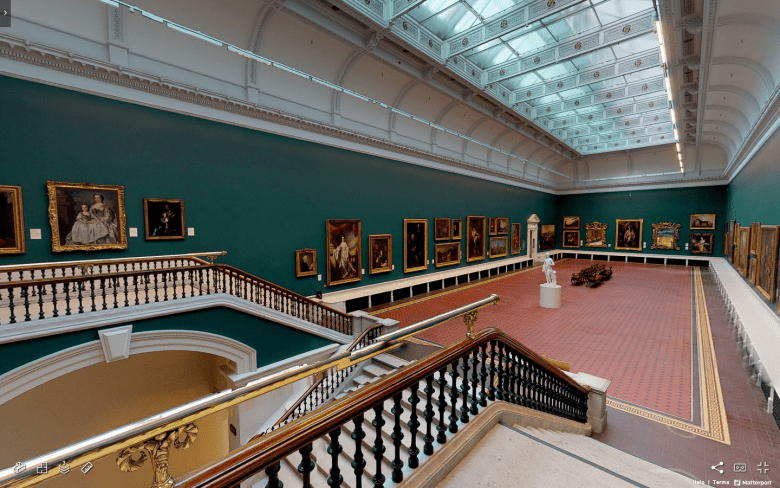
Each work of art in the Grand Gallery has a link to Ireland, whether by artist, subject, sitter, former owner or source of acquisition.
Use your cursor to navigate around the space in the window below.
About the Grand Gallery
The Grand Gallery is dedicated to the eighteenth-century Enlightenment and includes works of art by British, Irish, French, Italian, Spanish, Dutch and Swiss artists. The Enlightenment in Europe and America was partly a reaction to the wars and autocracy of the previous century, represented by Jan Wyck’s monumental depiction of the Battle of the Boyne of 1690.
In the following century, the absolute rule of monarchs was challenged and attempts were made to separate church and state. Intellectuals and politicians sought an era of progress, tolerance, political and personal freedom, alongside literary self-expression and scientific enquiry. The great French Encyclopédie, published in 35 volumes between 1751 and 1772, is a great example of this. The foundation of the [Royal] Dublin Society in 1731, aimed at raising the level of Irish agriculture, art and science, is another. There was also a major expansion in the range and availability of music and theatre.
Descriptions of the paintings
The paintings in this room are listed in our online collection.
Browse the paintings and read descriptions online
This project was generously supported by the Annenberg Foundation.
More information
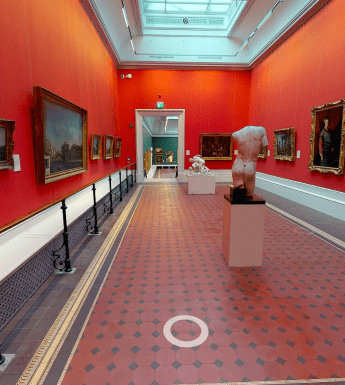
Virtual Tour: Rooms 48–45
European art from the early eighteenth to the middle of the ninet
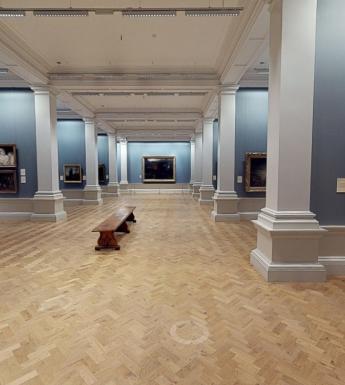
Virtual Tour: Irish Art 1670–1835
Wander through Room 21 and explore some Irish art.
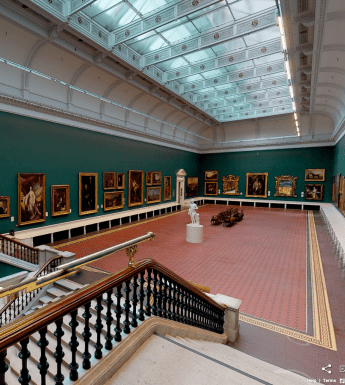
Virtual tours of the National Gallery of Ireland
See all available tours
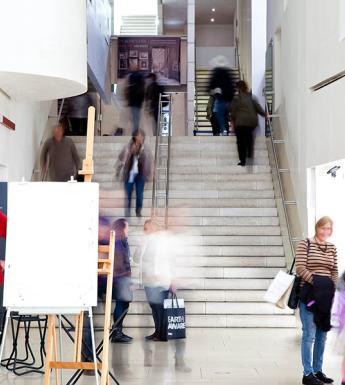
Thank you for supporting the Gallery.
The Grand Tour
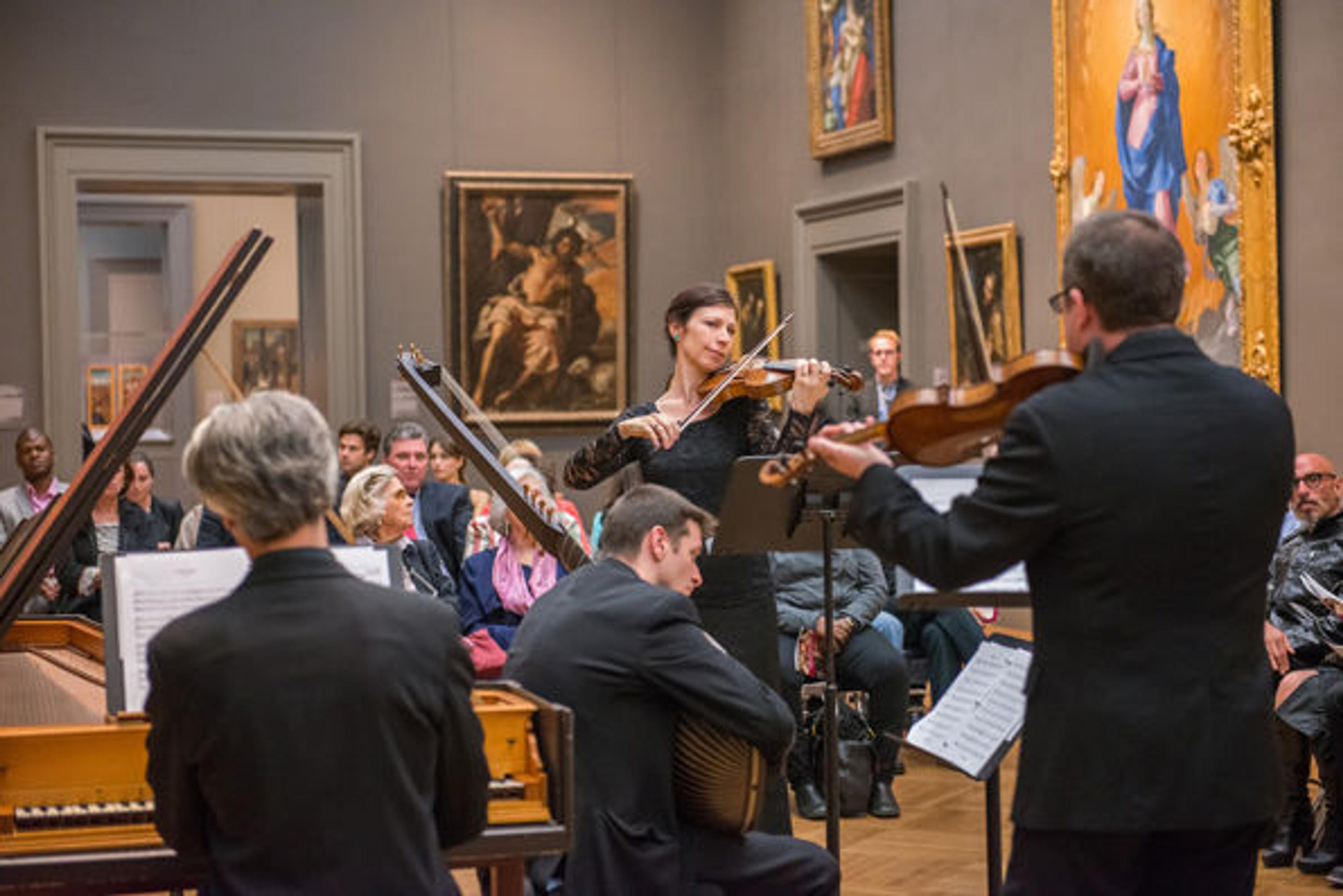
Opening Fanfare, The Grand Tour. Photograph by Stephanie Berger
«In celebration of the New European Paintings Galleries, 1250–1800 , the Museum hosted two special evenings of concerts on September 17 and 18. Music and art came together to illuminate the time period represented by the galleries, creating a resonant cultural experience.» The Grand Tour offered four distinct programs performed in the galleries by leading early music ensembles, with audiences seated right beside works of art. There were so many transcendent moments—and so many revelations. While enjoying the sights and sounds of sixteenth-century Venice or eighteenth-century France, audiences were also able to understand how this music was actually performed, appreciated, and observed in its time. Join us for future programs!
Details of the Program
Gallery 601—Baroque Painting in Italy Performers: Quicksilver (violins, harpsichord, theorbo, guitar)
Quicksilver in Gallery 601. Photograph by Stephanie Berger
In this gallery, the painting Marcantonio Pasqualini (1614–1691) Crowned by Apollo by Andrea Sacchi celebrates a famed male soprano who performed in operas, in the Sistine Choir, and in private solo performances.
Andrea Sacchi (Italian, ca. 1599–1661). Marcantonio Pasqualini (1614–1691) Crowned by Apollo , ca 1641. Oil on Canvas; 96 x 76 1/2 in. (243.8 x 194.3 cm). The Metropolitan Museum of Art, New York, Purchase, Enid A. Haupt Gift and Gwynne Andrews Fund, 1981 (1981.317)
The painting depicts Pasqualini as he is championed by Apollo, the god of music. Pasqualini is seen playing the upright harpsichord (Clavicytherium), and the bagpipes appear beside Marsyas, a reference to the musical battle between Apollo and Marsyas—a story resulting in the hierarchy of instruments (string above wind).
In the seventeenth century, stile moderno (explored in this Grand Tour program) utilized specific instruments for their sound or for their ability to provide the continuo part. The continuo part is the bass line of the score, played by one or more instruments simultaneously. Continuo parts were played by bowed bass (baroque cello, violin), or bassoon, or by instruments that can play chords (harpsichord, organ, lute, theorbo, and harp). Sonatas composed for multiple instruments were performed by smaller chamber groups and during church services.
Gallery 634—Dutch Paintings in the Altman Collection Performers: Dark Horse Consort (cornetto, sackbut)
Dark Horse Consort in Gallery 634. Photograph by Stephanie Berger
While the program of music selected for this setting honored the early Netherlandish composers of the 1500s, the works on view date to nearly a century later, the age of Rembrandt and Hals. The piety of the Netherlands during the seventeenth century put certain limits on musical expression, and any music heard in the Calvinist Republic would have been within a religious setting. Having been previously forbidden, organ music was slowly reintroduced beginning in the mid-1600s and reintegrated into services, and churches became the cornerstone of "concerts." The cornetto (a wooden pipe covered by leather) and sackbut (much like a trumpet, but featuring a telescoping slide so as to vary and control length, and a narrower bell) regularly accompanied choral music. These church concerts were thought to keep people out of the inns and taverns and curb scuffles and dissention. Ah, the power of music!
In many paintings of this time period, the instrument acts as a barometer of social standing. The upper class is represented alongside a string instrument like the lute, viola da gamba and virginal, while the lower classes are seen with wind instruments such as bagpipes.
Gallery 607—Venetian Sixteenth-Century Painting Performers: Tenet (soprano, alto, tenor, and baritone voices; theorbo)
Tenet in Gallery 607. Photograph by Stephanie Berger
In the early sixteenth century, solo voices accompanied by instruments become fashionable. Madrigals were often performed by gentlemen, as music was an important and distinctive discipline among the upper class and especially the educated man. These performances were a highlight of private banquets and informal gatherings hosted by the elite. Musical concerts were also a regular accompaniment to more elaborate parties. These events could include a full day of festivities with hunting and full-length comedies containing musical interludes.
Entering the 1600s, the theorbo gained popularity, and it became more in style for a singer to be accompanied by the theorbo or guitar (rather than the lute). Instruments like the lute and theorbo often serve as a symbol of love, and it is no wonder—the instruments seem to instantly create a gentle intimacy—although, the theorbo does give off a deeper, bass volume.
Titian and Workshop (Italian, ca. 1485/90?–1576). Venus and the Lute Player , ca. 1565–70. The Metropolitan Museum of Art, New York, Munsey Fund, 1936 (36.29)
This gallery has some of the most striking representations of love, art, and music. Here, the convergence of romance and attraction in art usually manifests itself in the form of the goddess Venus, a favorite subject of Titian. When truly observing his paintings we see a whole love story unfold, one in which there is a thread linking the beauty of music (sound) to physical beauty (sight). Many art historians have theorized that these paintings are a statement on perceiving beauty, while others consider that an overly philosophical analysis and say the paintings are purely decorative, even a bit suggestive. The answer may be a little of both. In Titian's paintings and depictions of Venus alone we see her as both a paragon of love, possessing a mature reserve, and in other instances a figure of sexuality and provocativeness.
Gallery 615—History, Portraits, and Genre in Eighteenth-Century France Perfomer: Jory Vinikour (harpsichord)
Jory Vinikour in Gallery 615. Photograph by Stephanie Berger
A harpsichordist held a prominent place in the opulent French courts of the late seventeenth and eighteenth century. A court harpsichordist or music director composed music for the king's entertainment and daily church masses. During the reign of King Louis XIV (1643–1715), a work was often performed each morning in the Royal Chapel.
Outside of the court, and especially in the declining years of King Louis XIV, the theaters were bustling with wit. Lightheartedness prevailed on the stage. The courtiers ran off to urban Paris at night to delight in theater, opera, and ballet, slinking back to Versailles in the early morning hours. These public theaters were one of the only places where different social classes could mix and mingle, as ticket prices were the only barrier to entry and keeper of the social structure. Audiences developed an increasing taste for opera-ballets at theaters like the Royal Academy of Music in the 1700s. They craved slim plots, elegant scenery and costuming, and themes of absolute pleasure rather than staunch heroes.
Comedic theater found its way into seasonal fairs, and what began as a lower class form of diversion soon attracted the upper classes. Theater at these fairs traditionally sampled well-known opera tunes (think vaudevilles), but later became more sophisticated as it cultivated a courtier clientele. This is mainly due to a relaxation on the monopolies of the opera houses of the time. However, fairs remained the stomping grounds of comedic favorites such as Pierrot, Harlequin, and Puchinello.
After the death of King Louis XIV, public balls were inaugurated at the opera. At these extravagant events there was a sense of social leveling as guests were asked to arrive masked. The price of a ticket was the same for everyone and the costume mask became a great equalizer in the world of entertainment.
Related Links Concerts and Performances New European Paintings Galleries
Further Reading
Katharine Baetjer, ed. Watteau, Music, and Theater (The Metropolitan Museum of Art, New York, 2009). Andrea Bayer, ed. Art and Love in the Age of Renaissance Italy (The Metropolitan Museum of Art, New York, 2008). Edwin Buijsen, ed. The Hoogsteder Exhibition of: Music & Painting in the Golden Age (Hague: Hoogsteder & Hoogsteder; Zwolle: Waanders, 1994) Keith Christiansen, A Caravaggio Rediscovered: The Lute Player (The Metropolitan Museum of Art, New York, 1990)
Meryl Cates
Meryl Cates is a senior publicist in the Communications Department.
- Mario Bernardi
- The Grand Tour Europe Terms and Conditions
- The Grand Tour Europe Corporate Social Responsibility Policy
- The Grand Tour Europe
- Financial Protection
- Customer Support
- Private Virtual Guided Tours
- The Grand Tour – Private Italy Guided Tours – Lived Experience of Art and Culture
- Guided Tours of Italy
- Shopping and a stroll around Rome
- Rome Highlights Sightseeing Driving Guided Tour
- Ancient Rome walking guided tour
- Appian Way Driving Tour
- Sightseeing Tour of Ancient Rome
- From the Dark Ages to the Baroque Splendor
- Guided Tours of Renaissance Rome
- Introducing Rome on The Grand Tour walking tour
- Gelato Tour around Baroque Rome
- On The Footsteps Of Saint Peter
- Guided Tours of the Palazzi of Rome
- Vatican Museums, Sistine Chapel & St Peter’s Basilica
- The Borghese Gallery and Gardens
- Private Guided Tours of Underground Rome
- Secret Rome Tour: Trastevere Undergrounds
- Guided Tour of the Underground of the Celian Hill
- Boat Cruise on Tiber River & Tour of the Scavi of Ancient Ostia
- Guided Tour of Pompeii and Amalfi Coast from Rome
- Guided Driving Tours of the “Castelli Romani”
- Tivoli Villas: Hadrian’s Villa and Villa D’Este
- Venite Adoremus: Nativities and Adorations
- Christmas Tour: Le Madonnelle di Roma
- Christmas tours: Basilica of S. Maria Maggiore
- Christmas Tour: Witches in Rome
- Christmas Tour: Christmas at the Vatican
- Christmas tour: Nativities and Masterpieces
- Guided Walking Tour of Florence
- Chianti and Panzanello Winery from Florence
- Tour of Pisa and Lucca from Florence
- Private Guided Tour of Capri
- The Gold of Naples walking tour
- Guided tour of Pompeii from Naples
- Siena and San Gimignano driving tour
- Highlights of Venice Guided Tour
- Private Guided Walking Tour of Venice
- Murano and Burano from Venice
- Guided Tours of Verona
- Amalfi Coast, Positano and Ravello driving tour
- Milan city tour
- Rome Highlights Private Excursion from Civitavecchia
- Rome Sightseeing from Civitavecchia
- Livorno (Port of Florence)
- Pompeii and Vesuvius sightseeing from Naples Port
- Naples Highlights and Pompeii from Naples port
- Sorrento, Positano and Amalfi from Naples Port
- Paris Private Guided Tours
- London City Private Guided Tours
- Group Guided Tour
- VIRTUAL TOURS
- Essential information: AMALFI COAST
- essential information: FLORENCE
- essential information: MILAN
- essential information: NAPLES
- essential information: ROME
- essential information: VENICE
- The Grand Tour Gift Card
- The Grand Tour Enquiry Form

Masterpieces of the National Gallery in London – Virtual Experience
What They Say about our Virtual Guided Tours and Virtual Experiences
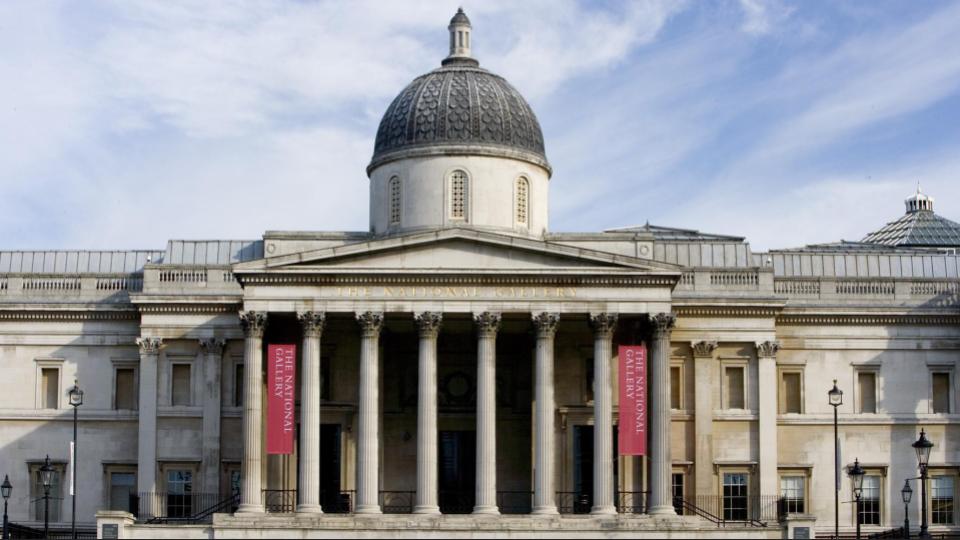
Previous Tour
Booking for masterpieces of the national gallery in london – virtual experience, tripadvisor traveller’s choice.

The Grand Tour
The Grand Tour Europe Ltd
Unique Guided Tours
Boutique Tour Operator
Head Office 2 White Friars, Chester, CH11NZ, UK
Chester +441244913326
Rome +390692928173
Venice +390418876986
Registered No: 08171172
VAT GB177128492

I have read and agree to the terms & conditions
Email address

State Tretyakov Gallery

- Tretyakovskaya • 5 min walk

Most Recent: Reviews ordered by most recent publish date in descending order.
Detailed Reviews: Reviews ordered by recency and descriptiveness of user-identified themes such as wait time, length of visit, general tips, and location information.

Also popular with travelers
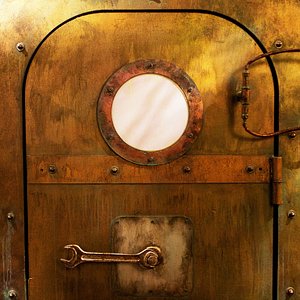
State Tretyakov Gallery - All You Need to Know BEFORE You Go (2024)
- Sun - Sun 10:00 AM - 6:00 PM
- Tue - Wed 10:00 AM - 6:00 PM
- Thu - Sat 10:00 AM - 9:00 PM
- (0.17 mi) Villa Kadashi Boutique Hotel
- (0.25 mi) Kadashevskaya Hotel
- (0.19 mi) Park Inn by Radisson Sadu, Moscow
- (0.15 mi) Hostel Vely
- (0.15 mi) CODE Coliving
- (0.03 mi) Restaurant Bratya Tretyakovy
- (0.06 mi) Sok Cafe
- (0.09 mi) Viani
- (0.08 mi) Bowl Me Maybe
- (0.09 mi) Yapokofe
- (0.10 mi) Fountain Vdokhnoveniye
- (0.05 mi) The Engineering Building
- (0.08 mi) Museum of Military History Streletskiye Palaty
- (0.07 mi) The Albion Gallery
- (0.05 mi) CANVAS Art Studio

IMAGES
COMMENTS
Englishmen abroad. At its height, from around 1660-1820, the Grand Tour was considered to be the best way to complete a gentleman's education. After leaving school or university, young noblemen from northern Europe left for France to start the tour. After acquiring a coach in Calais, they would ride on to Paris - their first major stop.
The Grand Tour™. Over the course of twelve weeks in summer the streets of Soho, Piccadilly and Covent Garden were lined with some of the world's most famous paintings, turning the West End into a giant gallery. Walkers were able to use our interactive map to find out which paintings were hanging where, or they could pick one of the specially ...
The Grand Tour is the name given to the travels around the principal towns and monuments of Europe made by young men of the British upper class in the 18th century. It was considered an important part of the education of a young man to see the great artistic achievements and classical remains of Europe, particularly those of Italy, as well as ...
The Grand Tour™. Our interactive map will help you get more out of The Grand Tour™. Each red dot represents a painting. Simply roll your cursor over the map to find out where the paintings you want to see are hanging, check out one of our tours, or just get your bearings. At the bottom of the map we've included two great offers:
The average Grand Tour lasted for at least a year. As Katherine Gazzard, Curator of Art at Royal Museums Greenwich explains, this extended journey marked the culmination of a Grand Tourist's education. "The Grand Tourists would have received an education that was grounded in the Classics," she says. "During their travels to the ...
The Grand Tour was a trip across Europe which was taken by upper-class gentlemen during the 17th and 18th centuries to observe great art. ... Giovanni Paolo Panini, Interior of the Pantheon, Rome, 1734, National Gallery of Art ... Gokce holds a bachelor's degree in History and Archaeological Studies and a master's degree in Museum and Gallery ...
Entrance to the Grand Canal from the Molo, Venice, oil on canvas by Canaletto, c. 1742-44; in the National Gallery of Art, Washington, D.C. (more) At its zenith, the grand tour cultivated generations of privileged young men, but it also had an impact on the countries the grand tourists visited and on the countries to which they returned.
Sculpture Garden. Outdoor sculptures adorn our 6.1-acre oasis in the heart of the city. Open 10:00 a.m. to 5:00 p.m. daily. Enter from 7th Street, Constitution Avenue, and Madison Drive. Must-Sees. Some galleries on the West Building Main Floor are closed for renovations. Learn more.
The National Gallery's Grand Tour is its best show ever This article is more than 16 years old Pictures from the National Gallery have been reproduced and hung in the streets of London.
Sandro Botticelli's 'Venus and Mars' is one of the masterpieces to hit London's streets The National Gallery and HP unveil the Grand Tour today For twelve weeks, the streets of London are being turned into a Gallery - as around 30 full size recreations of National Gallery paintings are hung on the walls, in the most unexpected and unusual of places]]> Source: The National Gallery of London For ...
Two ground-breaking pictures by Joseph Mallord William Turner (1775-1851) will return to the UK for the first time in over 100 years, as part of a new National Gallery focus exhibition. Generously lent for the first time by The Frick Collection in New York, the two oil paintings, will be on display at the Gallery in the Turner on Tour ...
Explore the National Gallery's collection, exhibitions, and Sculpture Garden with audio tours, stories, and more. ... please schedule a group tour. See the Tours Calendar. Self-Guided Tours. Bring your phone and explore collection highlights on your own with easy-to-use audio guides or our mobile app. Be Your Own Guide. School Field Trips.
The Grand Tour: The National Gallery Goes Outside. By Hazel Last edited 202 months ago. ... The Grand Tour, various locations around Soho, Piccadilly and Covent Garden.
The Grand Tour: Venice. User-created. ... The National Gallery, London. Check out this velvet robe, and fabulous hat! The Doge (the g is soft and pronounced like a "j".) was the most powerful figure in the Venetian republic. In its days as an independent state, the Doge was considered the head of government of the Venetian Republic who presided ...
A variety of literature and bibliographic material accompanied and evolved with the Grand Tour. The selections here are drawn from the National Gallery of Art Library's rare books collection and image collections. They record, describe, and distill the experiences of travelers in a variety of ways, and afford us unique views of the Grand Tour.
The Grand Tour. The Grand Tour was a journey of cultural initiation which young artists, aristocrats, collectors and statesmen in the XVIII and XIX centuries undertook in Italy in order to experience the survival of classical culture. To document this formative ritual, which quickly became a status symbol, souvenir images emerged in the '700 ...
About the Grand Gallery. The Grand Gallery is dedicated to the eighteenth-century Enlightenment and includes works of art by British, Irish, French, Italian, Spanish, Dutch and Swiss artists. The Enlightenment in Europe and America was partly a reaction to the wars and autocracy of the previous century, represented by Jan Wyck's monumental ...
The Grand Tour. Meryl Cates. October 2, 2013. Opening Fanfare, The Grand Tour. Photograph by Stephanie Berger. «In celebration of the New European Paintings Galleries, 1250-1800, the Museum hosted two special evenings of concerts on September 17 and 18. Music and art came together to illuminate the time period represented by the galleries ...
What They Say about our Virtual Guided Tours and Virtual Experiences. Unfortunately, the 7-day trial period has expired. Check our subscription plans! >>. Masterpieces of the National Gallery in London - Virtual Experience.
The long-awaited new arts center dazzled everyone who entered. On Saturday Moscow celebrated the grand opening of the GES-2 House of Culture. Headed by curator Teresa Iarocci Mavica and funded by ...
State Tretyakov Gallery. 5,953 reviews. #17 of 4,941 things to do in Moscow. Art Museums. Closed now. 10:00 AM - 9:00 PM. Write a review. About. The State Tretyakov Gallery is the national treasury of Russian fine art and contains more than 180,000 works of painting, sculpture and graphics created by generations of Russian artists.
1283 - Grand Duchy of Moscow territory established. 1300 - The Kremlin, or fort, was enclosed by a strong wall of earth and timber. [1] 1303 - Yuriy Danilovich becomes Grand Prince of Moscow. [2] 1325 - Seat of "metropolitan of Central Russia" relocated to Moscow. [3] 1327 - Uspensky Church consecrated.
The State Tretyakov Gallery (Russian: Государственная Третьяковская Галерея, romanized: Gosudarstvennaya Tretyakovskaya Galereya; abbreviated ГТГ, GTG) is an art gallery in Moscow, Russia, which is considered the foremost depository of Russian fine art in the world.. The gallery's history starts in 1856 when the Muscovite merchant Pavel Mikhailovich ...